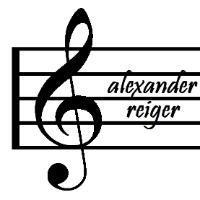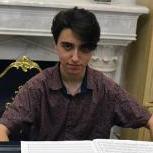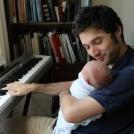Leaderboard
Popular Content
Showing content with the highest reputation on 12/11/2020 in all areas
-
@PaperComposer thanks, I'm so glad you like it! 😊 Natasha is a ballerina actually, that's why I chose that picture (although the waltz isn't necessarily meant to go with an actual ballet dance). Thanks for your recommendation as well, hadn't checked out the Aviator soundtrack before but it's great! @Rabbival507 thanks for the feedback! Never thought about it much before, but perhaps I should experiment more with irregular structures. I think that the way I conceived it, the extended middle part (the 'C' section of the rondo) acts as the 'break', before moving back to stability as represented by the recurring 'A' theme. You've given me something to think about there though, so thanks! 😄2 points
-
Hi all, This is the final edit of the 3rd Movt of my 2nd piano Concerto. I've extended the cadenza and ironed out the wrinkles along the way. For some reason I couldn't stop twiddling with it until I got it to this point, but now that I have, I'm happy to think of it as finished and leave it without further twiddles! I've now started working the material I have for the 1st and 2nd movements so hopefully I might have a completed work in another couple of years 😂. Anyway, I hope you like it and if you did hear the first version, I'd be interested to know what you think of the differences. This particular movement started life a few years ago as a piano improvisation and gradually got molded into what it is now, as did most of the material for the other movements, let's see where they end up!2 points
-
Hello everyone, Once again, it has been a long time since I've posted anything here. Over the past year, I have been recording my chamber works using the remote recording technique (where the musicians involved record their parts separately), and have just finished recording my Piano Quartet no. 2 in G minor in this manner. I have already posted a live recording of the second movement here (https://www.youngcomposers.com/t38945/piano-quartet-no-2-op-10-mvt-2/), but the quality was not that great. Here, the quality is significantly better, and more importantly, the piece is complete! The Piano Quartet no. 2 in G minor, Op. 10 was written between 2019 and 2020, 3 years after the Piano Quartet no. 1 in B-flat major, Op. 3. It is my longest chamber work, lasting roughly 32 minutes, and has 3 movements. It was actually written concurrently with the Lacrimosa for piano quartet, Op. 11, hence the same orchestration. The whole piano quartet is based entirely on 2 distinct themes, which provide the melodic foundations of each movement. The 3 movements are as follows: Movement 1. - Andante misterioso - Moderato patetico (G minor) Movement 2. - Adagietto - Andante (C major) Movement 3. - Larghetto - Allegro grazioso (G minor-major) I would like to give a huge thanks to everyone who helped me bring this recording project to fruition. Their performances and services were phenomenal, and I could not have done this without them! The performers are as follows: - Javier Orman, violin (Mvts. 1, 2, and 3) https://www.javierorman.com/ - Dima Ratush, viola (Mvt. 2) - JonathanCello, cello/viola lines played on cello (Mvts. 1 and 3) https://www.fiverr.com/jonathancello/do-session-cellist-for-your-musical-project?utm_campaign=gigs_show&utm_medium=shared&utm_source=copy_link&utm_term=engey - Avigail Arad, cello (Mvt. 2) https://www.fiverr.com/avigailarad/teach-you-how-to-play-the-cello?context_referrer=user_page&ref_ctx_id=442e84e2-4238-452e-9737-c8c33da05bd5&pckg_id=1&pos=1 - Myself, piano (Mvts. 1, 2, and 3) Here are the recordings of all the movements: Here is the original video of the second movement: As always, I hope you all enjoy. 🙂1 point
-
I have written a quartet for strings on which I would like the honour of some of your criticisms. This work has sprouted from almost a year and a half of counterpoint study. It is similar to a fugue; that is, it does tend to have fugal aspects; however on the whole, this is mostly a work of counterpoint with many interesting hidden ideas embedded within it. I can understand if you are unable to listen to the entire work, as it is almost 16 minutes long; however, if you give me some feedback on even a single contrapuntal passage, I would be greatly indebted to you. Thank you for your time and I dearly hope you enjoy this work. On a side note, this recording that I have here does not take into consideration single note dynamics which is indeed frustrating; however, it is the only soundfont I could find that effectively does some of the counterpoint justice (that is, so it is not too muddy sounding).1 point
-
Thanks! The idea of writing for this combination came from hearing a recording of W.F. Bach's flute duets where the second flute was replaced with an oboe. This is just the Finale audio output. I'd love to hear these duets played by actual people, but I don't expect that will ever happen.1 point
-
REMINDER: Today is the last day to submit your piece for the competition! Some of you already have done so; thank you. The rest of you have until midnight tonight Pacific Time to send me your submissions via private message! Thanks. Current Entrants: @Bradley Scarff @Left Unexplained @caters @PaperComposer @Joshua Ng @bkho @Aled Edwards @Ivan1791 (backup judge) @zhenkang @Leonardo C. Núñez @Thatguy v2.0 @luderart Current Judges: @Tónskáld1 point
-
An awesome achievement for a musician, and having a recording that good is simply incredible. No idea why there are some people who found your works boring, I think they are full of passion and with great thematic development. I guess my teacher lost his common sense after too many decades composing weird music, because he also started saying how using mordents in my pieces was bad and my music was "gay".1 point
-
Hey, about 5 weeks ago some friends told me about a composition contest is launched by the Xalapa Symphonic Orchestra, (Xalapa, in the state of Veracruz, Mexico) which is one of the most important and respected orchestras in Mexico, with very high level players from this country and foreigners, with an European conductor. This contest sounded like a very good chance to get a piece performed since they said not only one piece will be selected, but 8, and they are open to see the composer cataloge, anyway, I didn't delay much and started writing exactly 1 month ago, an piece in Overture form, with max. of 4,4,4,4 - 4,3,3,1 Timpani, 3 perc. Harp, Piano/Celesta and Strings, and 8 minutes maximum. There is no $$$ prize, but the pieces will be performed and recorded. Dead line is march 19, and results will be april 21. So, this is my entry for that contest, and I share with you here as a tradition to me. Obertura Magica.pdf1 point
-
Thank you so much paper composer, I really appreciate your comments. You did in fact review the earlier version and it was some of your constructive critique that ultimately shaped this edit, so thank you for both reviews. It's always nice to hear good things about your work, but much more valuable is the time spent by reviewers like yourself, putting together an honest and informed critique. As composers we are often too close to our own work to hear what really needs to be done in order to improve it. This has always been the main reason I post here and I do always take into account any comments my work may receive. Please don't ever stop what you do here, it's more valuable than you know. The sound font remains the same (note performer) but the mix is brighter I think. I also am now in agreement about perhaps giving the piano (perhaps in the cadenza) some of that string section you mention as I too think it deserves a bit more of the spotlight so perhaps there is just 1 more twiddle in it 😂 Many thanks Mark1 point
-
This is beautiful music, with much thematic consistency. If this was on Spotify, I'd add it to the classical playlist I listen to at work. I like the power of the final movement, and the expressive changes you make to the theme throughout all the movements. Well done! Also, hats off to the performers for pulling together such a tight recording remotely!1 point
-
I remember hearing the earlier version of this but I don't remember if I reviewed it. I think I like the changes you made because some more melodious sections were new to me. This rendition also seems to be using different soundfonts if I am not mistaken. They sound quite crisp and clear! There are quite a few great contrasts you create in this which keeps it constantly interesting too. The percussive toccata-like main theme doesn't dominate the whole movement but is juxtaposed with many interesting and lyrical sections. I enjoyed your use of the whole-tone scale (5:58). I think my favorite part is at 6:24 where you build a nice song-like melody with the piano. 7:02 is really nice too - you use the lull in the activity of the piano to weave a beautiful melody in the strings. Great ending! The only thing I think could be improved is to somehow allow the piano to have some of the beautiful melodies you seem to have reserved for strings - maybe in a Rachmaninoff-esque kind of style? Just an idea. Overall this was quite an involved and enjoyable movement! Thanks for sharing.1 point
-
Brilliant. Can't resist the Dorian. Well orchestrated, I think, mostly, I enjoyed the part based just around the pitch percs. I'm trying to think if there's anything I'd do differently... Well some parts sound rather humorous when the quotes and explanation make it sound like a rather serious story. Also I think that, considering the changing rondo and all the things you mentioned about change and coming to an age... some times these things are not as... stable. I think I'd have added sections in 7 or 5 quarters, not as comic breaks but rather as serious unstable-ness one has to get used to, as both a listener and a dancer, just like the character in the book. That way we "come to an age", going back to stable waltz eventually, just like the character in the book. Moreover, at some parts (say bar 161) it feels as if you give up an opportunity to go livelier and broader for the sake of stability and gentleness. I'm sure she's not 100 percent gentle herself and that she has her own personality and inner demons, wouldn't you like to convey her character... more fully?1 point
-
Thanks so much for listening to my work and thank you for your compliments. Now, on to your criticisms. That is a very good point; thanks for bringing it to my attention. I think that, in order to create a better sense of form, I should perhaps vary the complexity at times. I think I should write a section such as the Poco adagio in the actual contrapuntal sections with proper strict counterpoint again; perhaps, exploring some of the themes in various other manipulations. I will definitely seriously consider implementing your advice. Thank you so much! Your advice is invaluable.1 point
-
I've been coming back to listen to this piece again for quite a while now. Somehow you manage to keep it interesting without stopping the forward motion of the waltz (except maybe at 219 - that part reminds me of "The Aviator" soundtrack). You effectively use the various sections of the orchestra including some very sparse orchestrations including just the pitched percussion. I really appreciate the care you seem to have put into displaying the proper harp pedal markings - I am not sure if MuseScore has that capability. It comes as a surprise to me that the last two chords are not the only tutti (or nearly tutti) parts of this waltz. The piece sounds very personal despite that. The picture in your video is confusing because I don't think Natasha is a ballerina right? This is just meant to be a sonic representation of her character not an actual dance that the character would dance to. Overall this was successful as such I think. Nothing too flashy - just a very laid back almost cinematic mood that you set here. Nice job!1 point
-
Hi everyone! I know this is really late (I was really caught up with academics) but yea here was my entry for the Summer Competition 2020, in which I won the 3rd place for the Traditional Judging. This is the last movement of my 1st String Quartet. (Will release the entirely of the string quartet soon once I do some extensive editing) As per competition requirements, I had themed my pieces around the pandemic and how it has affected me. My piece is inspired by the frustration and anger that one has felt during the COVID-19 pandemic, and the chaos of the unpredictable nature of the virus, depicted by the many fast virtuosic running passages, with the introduction as if reminiscing the times before the pandemic hit. Between these negative feelings has contrasting subjects that are in the major key, symbolizing the feeling of hope for humanity that mankind can adapt to the changes caused by the virus and get through this ordeal together. The piece ends in a major key, as a symbol of positivity and hope that mankind can adapt to the virus and create a vaccine before more innocent lives are lost. I intended to maximise the use of the resonance of the open strings in this quartet, as well as to create a virtuosic quartet that can test the limits of the conventional quartet and push the boundaries of contemporary string writing. I have also utilized an unusual structure (Introduction - Theme - 1st Subject - Theme - 2nd Subject - 1st Bridge - 1st Subject - 2nd Bridge using 2nd Subject and 1st Bridge Fragments - Theme - Coda) to add to the uniqueness of the piece. I know there are some inherent flaws with this that were well brought up by the judges, and I must thank their honest feedback. This entry was really rushed as I only knew of the competition very late on, and coming up with an entire 8 minute quartet in the span of just a little more than a week was really challenging. I felt I could done a lot more as the transitions could have been improved with time and there were some careless playability issues that I had overlooked. Give me time to edit the quartet, and I will be sure to improve it! Feel free to leave some feedback!1 point
-
There is an obvious correlation between the music and its composer but there are severe limits. First of all, the quality of the music depends almost entirely on how much the composer has thought about his work and how experienced he is or is not. And a person's personality does determine what style he enjoys, how easily satisfied he becomes with his work etc etc.. but I don't believe it happens the way you put it, as in: an exciting person writes exciting music, a boring person writes boring music. Excitement and boredom in music depends on the composer's intention, yes, but also on his ability to follow through that intention (which takes years to nurture). The other problem with this is that there is no absolute of what exciting music is or should be. Aesthetics varies by time, place, and person. What I'm also implying is that I don't believe in the romantic notion of the composer - the musician who lets his feelings run wild and these produce art. I think that's bs. The composer is both an artist and a craftsman and the division between the two is really superficial and academic.1 point
-
There is obviously a degree of personal self-expression in any composition. Only that music, as enigmatic and disguising as it is, can be understood by a listener in a totally different way. Therefore I couldn't describe a composer's personality out of his music alone. Could anyone, for example, tell how notoriously untidy Beethoven was from his energetic, yet well-structured pieces? Or could anyone tell how shy or insecure Tchaikovsky was, when listening to The Sleeping Beauty? Is the chaotic Rite of Spring an accurate description of the methodic and neat Stravinsky? Does Percy Graigner's obsession with sex show up openly in his music? Knowing these personality traits might (or might not) help to a better understanding of their works - but it's almost impossible the other way around.1 point



.thumb.png.8b5b433a341551e913a34392660bc95b.png)




